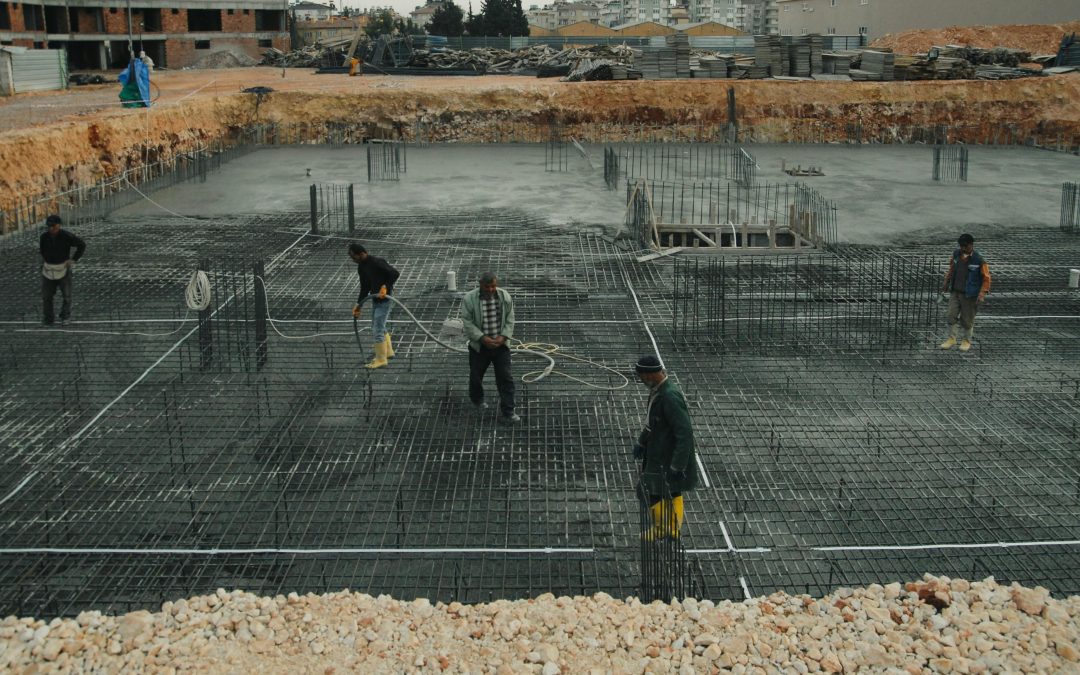Fiber-reinforced concrete (FCC) is one of the innovative building materials used in modern architecture and infrastructure planning. While traditional reinforced concrete is stabilized by embedded steel reinforcing bars, fiber-reinforced concrete uses finely distributed fibers to increase strength, crack resistance, and durability. The use of synthetic fibers is particularly interesting, offering both economic and technical advantages – but also presenting some challenges.
What plastics are used in concrete?
In the field of fiber reinforcement, polypropylene (PP), polyvinyl alcohol (PVA), polyethylene (PE), and, less frequently, polyamide (PA) are primarily used. These fibers are corrosion-resistant, lightweight, and chemically inert to the alkaline matrix of the cement.
-
PP fibers are the most commonly used synthetic fibers. They improve crack control in the early setting phase and increase impact strength.
-
PVA fibers offer particularly good adhesion to the cement matrix and exhibit high tensile strength.
-
PE fibers are valued for their high elongation capacity, which leads to improved energy absorption
-
PA fibers are relatively rare, but are used in special concretes with particularly high ductility requirements.
Mechanisms of Action: How Plastic Fibers Affect Concrete
The main function of plastic fibers is crack control. Microcracks develop in concrete during the setting phase due to shrinkage and temperature influences. Plastic fibers counteract this by bridging these cracks and thus inhibiting their propagation. This significantly increases the durability of the concrete. The post-fracture toughness – the behavior after the maximum load has been reached – is also significantly improved.
Mechanisms of Action: How Plastic Fibers Affect Concrete
Advantages of Plastic Fibers
-
Corrosion resistance: Unlike steel, plastics are resistant to moisture and chemical attack.
-
Weight: Plastics are significantly lighter, which facilitates processing on site.
-
Economical efficiency: Especially in applications with moderate mechanical requirements, expensive steel reinforcement can be dispensed with.
Disadvantages of Plastic Fibers
-
Lower stiffness and strength compared to steel – plastic fibers cannot completely replace load-bearing steel reinforcement.
-
Lower temperature resistance, which limits their use in high-temperature environments.
-
Long-term behavior and aging processes under UV and environmental influences have not yet been fully researched.
Therefore, the use of plastic fibers is particularly recommended in non-load-bearing components, shotcrete, industrial floors, or precast elements with reduced structural loads.
Conclusion
Fiber-reinforced concrete with plastics offers an interesting alternative or complement to traditional steel reinforcement – especially in terms of corrosion protection, weight, and ease of processing. Steel remains indispensable for load-bearing elements in many cases, but plastic fibers are becoming increasingly relevant in the context of resource-efficient construction methods.
Sources and Literature
- Bentur, A., & Mindess, S. (2007). Fibre Reinforced Cementitious Composites. CRC Press.
- Felekoğlu, B., Tosun, K., Baradan, B. (2009). Effects of fibre type and content on the performance of fibre-reinforced self-compacting concrete. Construction and Building Materials, 23(3), 1240–1248. DOI: 10.1016/j.conbuildmat.2008.07.017
- Banthia, N., & Gupta, R. (2004). Influence of polypropylene fiber geometry on plastic shrinkage cracking in concrete. Cement and Concrete Research, 34(9), 1403–1412. DOI: 10.1016/j.cemconres.2004.01.020
- Yin, S., Tuladhar, R., & Combe, M. (2015). Use of macro plastic fibres in concrete: A review. Construction and Building Materials, 93, 180–188. DOI: 10.1016/j.conbuildmat.2015.05.118
- Beushausen, H., & Alexander, M. (2007). Utilisation of fibre reinforced concrete in structural applications. Materials and Structures, 40, 993–1004. DOI: 10.1617/s11527-006-9194-2

Would you like to find out more or are you facing a specific problem?
Our expertise in modern production technologies and material applications makes us the ideal partner for your project. Whether consulting, feasibility assessment or technology transfer - we provide you with practical, scientifically sound and always strictly confidential support.

Chemistry at eye level
ChemSphere | Imprint & Privacy Policy | Copyright © 2025
ChemSphere | Imprint & Privacy Policy | Copyright © 2025
